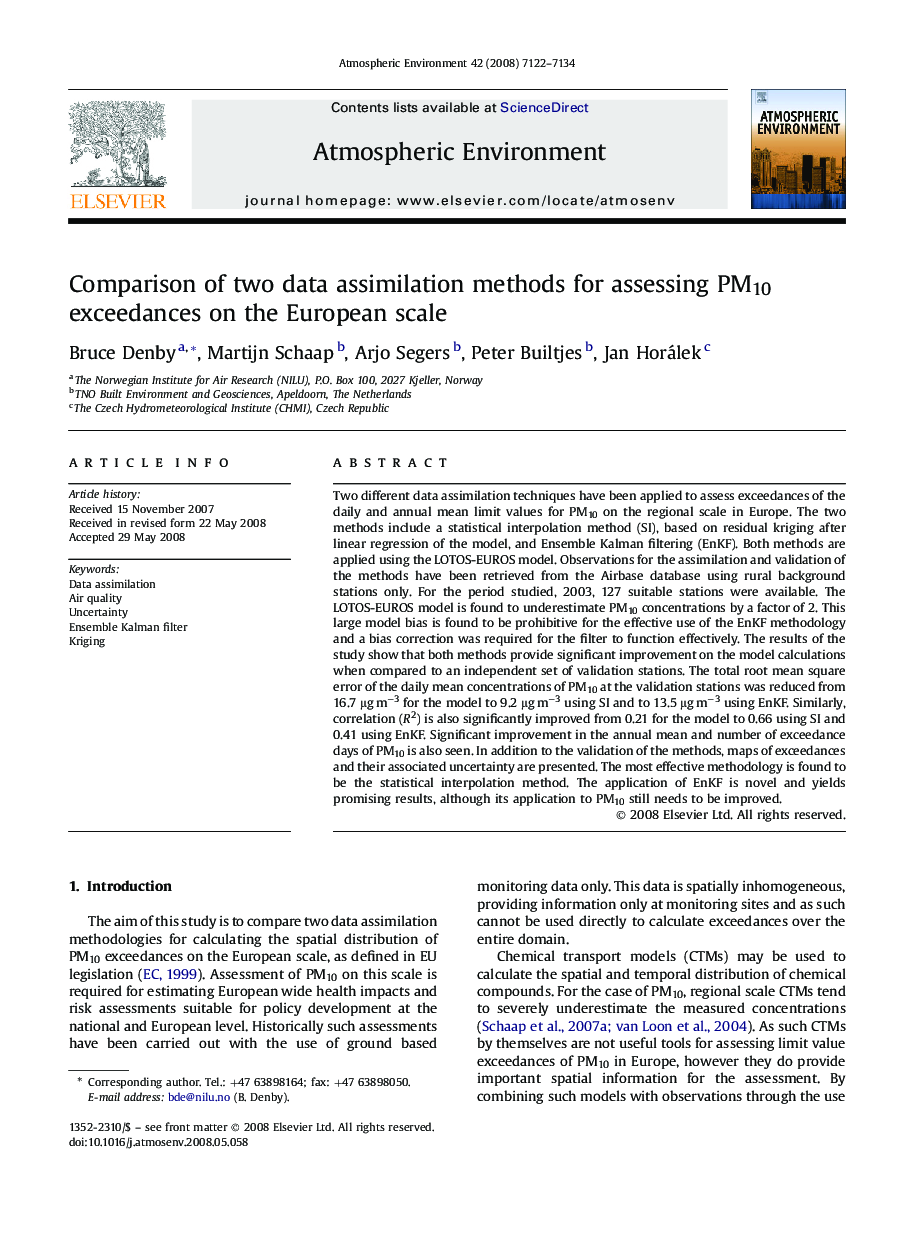| Article ID | Journal | Published Year | Pages | File Type |
|---|---|---|---|---|
| 4441666 | Atmospheric Environment | 2008 | 13 Pages |
Two different data assimilation techniques have been applied to assess exceedances of the daily and annual mean limit values for PM10 on the regional scale in Europe. The two methods include a statistical interpolation method (SI), based on residual kriging after linear regression of the model, and Ensemble Kalman filtering (EnKF). Both methods are applied using the LOTOS-EUROS model. Observations for the assimilation and validation of the methods have been retrieved from the Airbase database using rural background stations only. For the period studied, 2003, 127 suitable stations were available. The LOTOS-EUROS model is found to underestimate PM10 concentrations by a factor of 2. This large model bias is found to be prohibitive for the effective use of the EnKF methodology and a bias correction was required for the filter to function effectively. The results of the study show that both methods provide significant improvement on the model calculations when compared to an independent set of validation stations. The total root mean square error of the daily mean concentrations of PM10 at the validation stations was reduced from 16.7 μg m−3 for the model to 9.2 μg m−3 using SI and to 13.5 μg m−3 using EnKF. Similarly, correlation (R2) is also significantly improved from 0.21 for the model to 0.66 using SI and 0.41 using EnKF. Significant improvement in the annual mean and number of exceedance days of PM10 is also seen. In addition to the validation of the methods, maps of exceedances and their associated uncertainty are presented. The most effective methodology is found to be the statistical interpolation method. The application of EnKF is novel and yields promising results, although its application to PM10 still needs to be improved.
